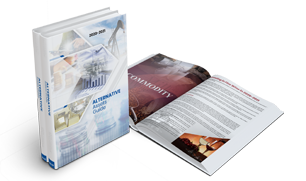
Never miss an important update |
Click to get notified about important updates only. |

99 Alternatives
Opportunities are Infinite
All investment models have risks and returns, and in the capital asset pricing model, there is only one source of market risk captured in the market portfolio, where the risk premium is the premium that the investors demand when investing in the portfolio.
There can be two risks associated with credit risk borne by investors holding security over a specific duration- Firstly, the risk of a default occurring anytime, and secondly, the risk of a change in probability of future default that can lead to the change of the value of the security in the secondary market.
The first type of risk is called jump-to-default, and the second is the mark-to-market.
In the case of risk-averse investors - the expected return on defaultable security reflects some compensation required by investors for bearing such risks.
The market price of default risk is typically identified by assuming that the market price of risk associated with the change of measure from the statistical default distribution to the risk-neutral default distribution is an affine function of the intensity under the risk-neutral measure. The market price determined by this method only considers the mark-to-market component of the default risk.
To estimate the jump-to-default or the mark-to-market risk premium, it is necessary to draw upon the information based on actual defaults. The estimates predicted on the price of securities and not on default suffer from bias equivalent to the survivorship bias.
Most asset classes' risk and return are first defined as risk-free. One can use the expected return on the asset as the risk-free rate. The expected returns on risky investments are measured relative to the risk-free rate. The risk-free rate comes up with expected returns, measured consistently with the cash flows. So if the cash flow is estimated in nominal US dollar terms, the risk-free rate will be the US Treasury bond rate.
Both cash flow and discount rates are affected by expected inflation, and a low discount rate that comes with a low-risk rate can be offset by a decline in expected nominal growth rates for cash flows where the value will remain unchanged.
There can be multiple risk premiums, and the default risk for bonds is captured through the default spread that the firm pays over and above the riskless rate.
The most commonly used methods employ the expected default frequency of Moody's KMV as a proxy to get actual default probabilities. The general description of the Moodys – KMV clarifies that the EDF is calculated as a non-parametric function of the Distance to default.
[Default distance is the difference between an estimate of the firm value and the value of firm liabilities expressed in units of the volatility of the firm's value. Given the inertia in estimating the value of debt and volatility, the change of this measure is wildly determined by the change in equity. It has been widely researched by experts for accuracy in prediction.
Such EDFs have higher predictive power than fund ratings because the rating measures default risk independent of the business cycle. Still, EDFs depend on the stock price and are mostly time-variant. EDFs can identify 72% of defaults and credit ratings only 61%. EDFs have been used to determine default premiums for the US corporate CDAS spreads and the stock price for Japanese banks' CDS spreads.]
The double-stochastic Poisson modelling of Duffie and Singleton (1997) and Lando(1998) provides a tractable framework to measure the default risk premium embedded in CDS prices. Such a framework leads to closed-form formulae to right-hand expression in avoiding the problem of numerical differentiation. It is called default event risk premium, where the premium is needed to compensate for the default event.
It can also be called credit event risk or jump to default. EDFs-based estimates of jump risk may suffer from the opposite bias of the rating-based estimates.
There are macroeconomic drivers where the economists individually identify the variables affecting the individual risk premium by performing dynamic panel estimation. They can even use the aggregate level to analyze the dynamics of the components required for calculating the variable.
In certain conditions, sovereigns start to show difficulties, and investors need higher default risk premiums for corporate accounting debts.
Real estate remains one of the most time-tested...
From liquifying your asset to any time you want to have...
Impact investing in real estate is a growing trend with...
Whether buying your first home or selling your...
What is better Silver or Sterling Silver? We all know...
How much do Twitch Streamers Make? Man is fun-loving...
Copyright © 2025 99alternatives Ltd. All rights reserved.
Designed and Managed by Mont Digital


